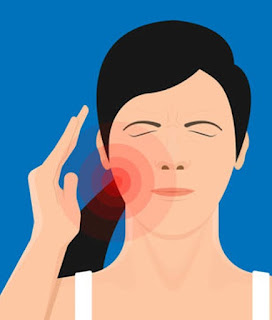COVID-19 has posed numerous challenges since its emergence, and one area of concern has been the phenomenon of frequent reinfections.
In a recent study, based on UK's national COVID-19 Infection Survey, seven participants experienced COVID-19 reinfection five times.
Among these participants, identified as white females aged 21–50 years, three reported having a long-term health condition, and two were healthcare workers. The study also analyzed the variants, symptoms, and cycle threshold (Ct) values associated with these reinfections (see table)
The study revealed that while reinfections increased after the emergence of Omicron variants, they were generally less severe than initial infections, associated with lower viral load and fewer reported symptoms compared to first infections.
Several factors were identified as influencing the risk of reinfection. Age played a significant role, with individuals aged 30–45 years being at higher risk (
likely due to increased exposure).
The study also found a non-linear relationship between Ct values and reinfection risk, indicating that both low and high Ct values in previous infections were associated with increased susceptibility to reinfection.
1 in 70 participants were identified as having been infected three times, and 1 in 1500 participants four or five times over the 3-year study period, with most fourth or fifth confirmed reinfections in the Omicron BA.4/5 and BQ.1/CH.1.1/XBB.1.5 waves.
A
study in Mexico showed that individuals with long COVID had higher rates of reinfections, diabetes, myocardial infarction, stable angina, heart failure and hypertension.
CDC says it's possible to be positive again
several weeks after a previous infection. The Australian Health Protection Principal Committee (AHPPC) reported that reinfections may occur as early as
28 days after recovery from a previous COVID-19 infection.
A study published in The Lancet Infectious Diseases in October 2020 reported the first confirmed case of COVID-19 reinfection in the United States, where a
25-year-old man from Washoe county of Nevada tested positive for the virus in April and end of May/June 2020 (2.5 months later), with two negative tests in between. The second infection was more severe than the first, requiring hospitalization and oxygen support. The researchers performed genomic sequencing and found that the two viral strains were genetically distinct, indicating a true reinfection.
A study from China found reinfections occurring as early as 94 days and as late as 611 days. Severe-critical reinfections were less common than initial infections, with proportions of 0.62% versus 1.37%, respectively, and reinfections also had a lower proportion of two or more symptoms compared to first infections (44.10% vs 53.91%). This trend was consistent among adults aged <60 years, but there was no significant difference in symptom severity between reinfection and first infection in the older age group (>60 years). Reinfection was associated with an increased risk of specific symptoms such as dyspnea, palpitation, chest pain, and joint pain. Additionally, patients with severe first infections were at higher risk for reinfection, while males, the elderly, and those fully vaccinated or boosted had a lower risk. Furthermore, individuals over 60 years of age and those with ≥2 comorbidities were at an increased risk of severe reinfections. Overall, reinfections tended to be less severe than initial infections, but certain demographic and clinical factors influenced the risk and severity of reinfection.
REFERENCES
Wei, J., Stoesser, N., Matthews, P.C. et al. Risk of SARS-CoV-2 reinfection during multiple Omicron variant waves in the UK general population. Nat Commun 15, 1008 (2024). https://doi.org/10.1038/s41467-024-44973-1
Gabashvili IS. The Incidence and Effect of Adverse Events Due to COVID-19 Vaccines on Breakthrough Infections: Decentralized Observational Study With Underrepresented Groups. JMIR Form Res. 2022 Nov 4;6(11):e41914. doi: 10.2196/41914. PMID: 36309347; PMCID: PMC9640199.
Bello-Chavolla OY, Fermín-Martínez CA, Ramírez-García D, Vargas-Vázquez A, Fernández-Chirino L, Basile-Alvarez MR, Sánchez-Castro P, Núñez-Luna A, Antonio-Villa NE. Prevalence and determinants of post-acute sequelae after SARS-CoV-2 infection (Long COVID) among adults in Mexico during 2022: a retrospective analysis of nationally representative data. Lancet Reg Health Am. 2024 Feb 3;30:100688. doi: 10.1016/j.lana.2024.100688. PMID: 38327277; PMCID: PMC10847769.
Cai J, Zhang H, Zhu K, Zhu F, Wang Y, Wang S, Xie F, Zhang M, Rui L, Li S, Lin K, Xue Q, Yuan G, Wang H, Zhang Y, Fu Z, Song J, Zhang Y, Ai J, Zhang W. Risk of reinfection and severity with the predominant BA.5 Omicron subvariant China, December 2022 to January 2023. Emerg Microbes Infect. 2023 Dec 6:2292071. doi: 10.1080/22221751.2023.2292071. Epub ahead of print. PMID: 38054806.
Tillett RL, Sevinsky JR, Hartley PD, Kerwin H, Crawford N, Gorzalski A, Laverdure C, Verma SC, Rossetto CC, Jackson D, Farrell MJ, Van Hooser S, Pandori M. Genomic evidence for reinfection with SARS-CoV-2: a case study. Lancet Infect Dis. 2021 Jan;21(1):52-58. doi: 10.1016/S1473-3099(20)30764-7. Epub 2020 Oct 12. PMID: 33058797; PMCID: PMC7550103.




Comments
Post a Comment